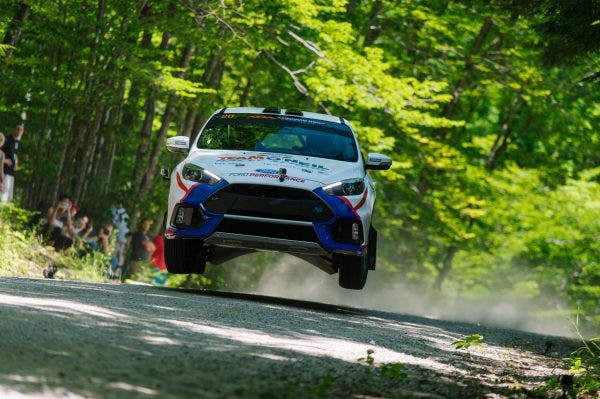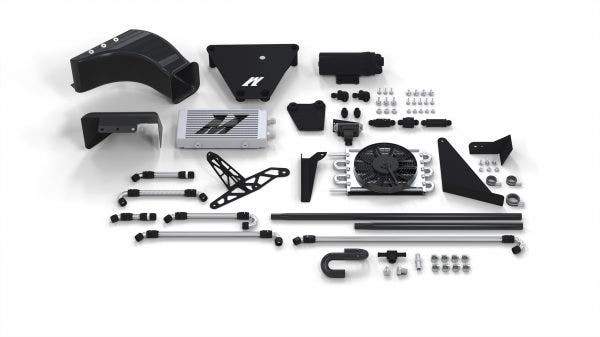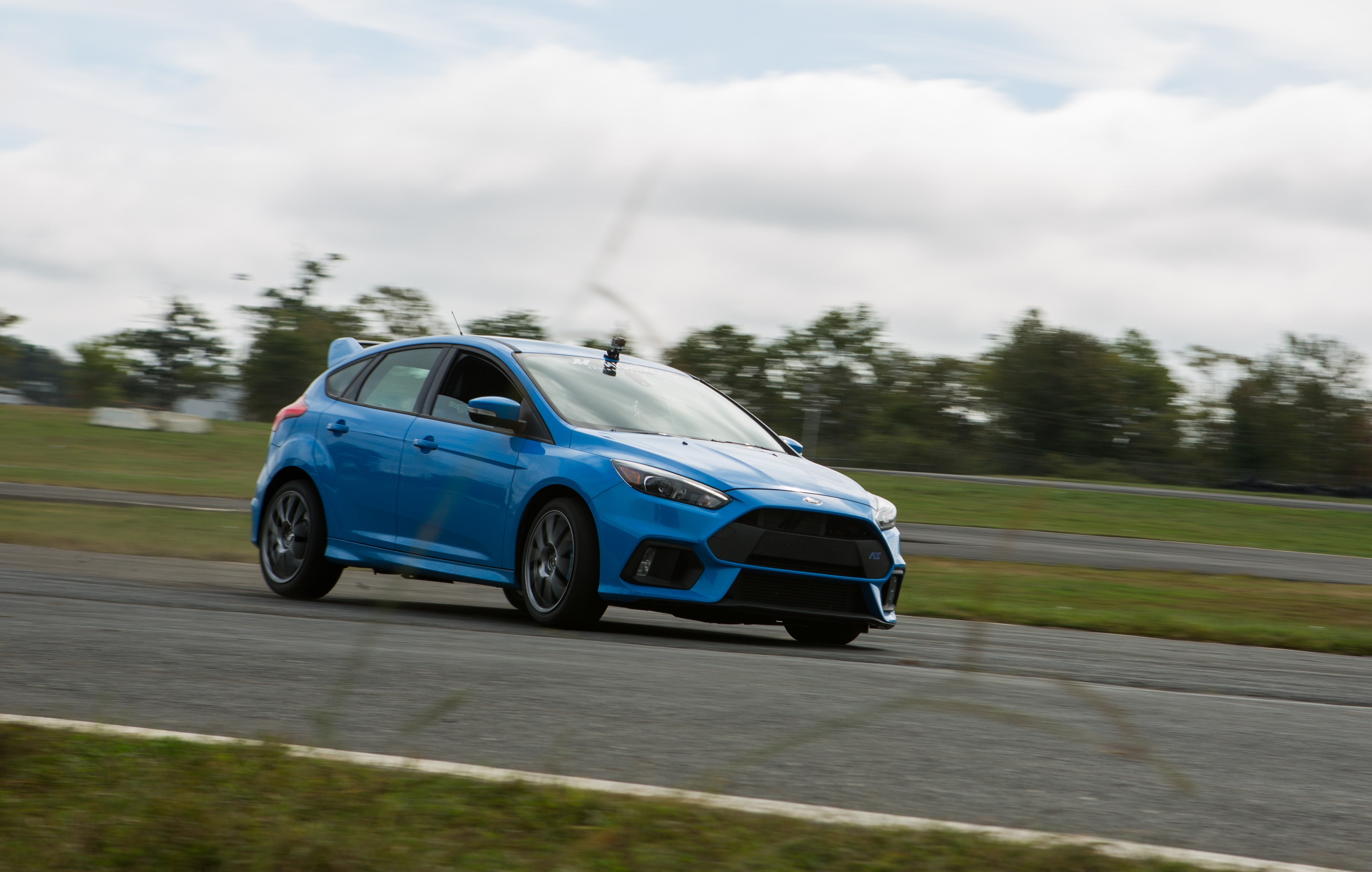
Diff's Hot, Take it Easy - Rear Differential Cooler R&D, Part 5: A Tale of Two Track Days Part 2
At first, admittedly, it didn't look like we were flexing as hard as we could with the Focus RS. With our full PTU/RDU cooling kit installed, we extended the time on the track with all four wheels producing power by about three minutes. However, after some reassessment, Dan transplanted the PTU temperature sensor from the gear oil into the coolant stream, producing great prospects for a fully functioning AWD Ford Focus. Since it would be a while until we could take our RS to the track, we decided to reach out to a third-party tester known for thrashing their cars in the name of motorsport.
Three's a Party
Motorsport is all about the challenge, and pushing your vehicle of choice to the limits. In the realm of racing, there are a myriad of different genres to challenge any car, but one especially stood out for the perfect test of Ford's sophisticated AWD system"rally stages. Keen to increase the performance of their brand-new rally-prepped Focus RS, Team O'Neil was more than eager to install our newly configured PTU cooler to retain the full potential of the torque-vectoring rear differential.
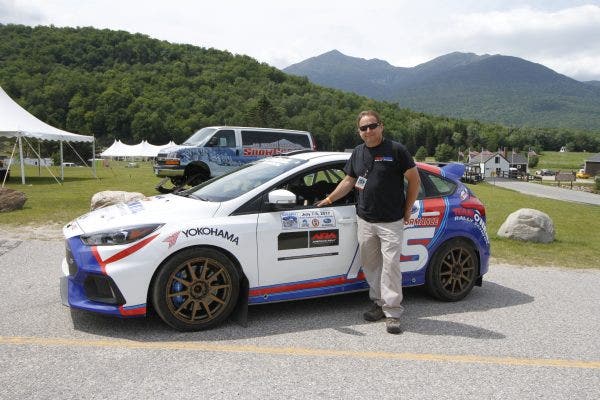
Tim O'Neil with his team's rally prepped Focus RS. Photo courtesy of Karl Stone and Team O'Neil.
Team owner Tim O'Neil has always had a soft spot for the German engineered Fords, so naturally he jumped on the opportunity to add the Mk.III Focus RS to the team's fleet of rally cars. Even before taking the delivery of the newest and hottest Ford hatchback, O'Neil was aware of the touchy rear differential, only to discover the full gravity of the situation during their own field testing at the team's facility in New Hampshire. The challenge of motorsport is something that Tim and his rally team take to heart. He and the engineers preferred to find a way to keep the rear differential functioning throughout their rallies and testing rather than replacing the full system.
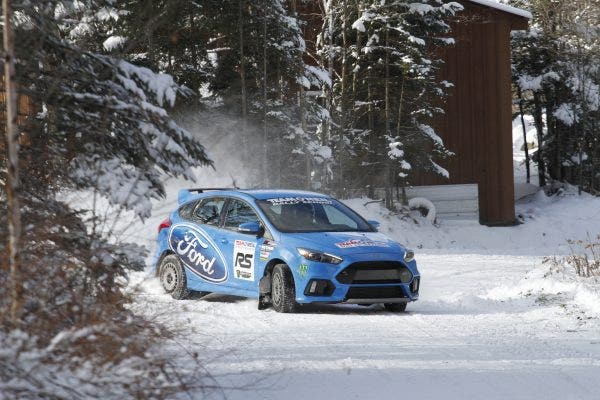
Photo courtesy of Karl Stone and Team O'Neil.
Shortly after our first track day, Dan and Eric worked diligently to assemble a PTU cooling kit for Team O'Neil. Now, the PTU is only half of the cooling system. Both our engineers, as well as Team O'Neil, felt confident that for this application the front cooler would suffice in keeping the RDU functioning through harsh and demanding rally stages. The same collection of engineers and race team professionals still recommend providing cooling to both differential units to ensure longevity.
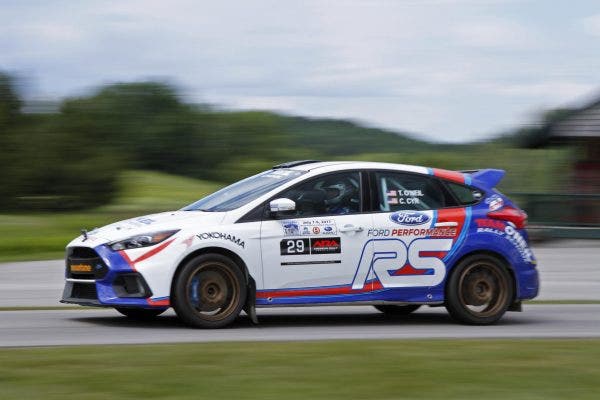
Photo courtesy of Karl Stone and Team O'Neil.
Team O'Neil had to get a little creative when it came to mounting the front differential cooler system. Due to the armored underbelly, and in the spirit of on-the-fly maintenance, the team's engineers mounted the cooler against the front grille. With the mounting location sorted and the PTU sensor repositioned, Team Mishi driver Andre Camrie-Picard and co-pilot Jeremy Wimpey set off in the 2017 New England Forest Rally stage. Anyone who has any semblance of what rally racing is knows that the drivers rely heavily on sliding the rear end of the car to quickly maneuver on the loose surface. While this style of driving is a normal walk in the woods for a standard mechanical differential, it's a serious workout for the RS's RDU.
Even through the hard labor Comrie-Picard put on the rear-end of the team's Focus RS, the additional cooling provided to the front differential, as well as the relocated sensor, kept the power flowing through all 4 wheels and propelling the team to a 5th place spot in the American Rally Association division and to the top of their class, completing the stage in 1:40:48.9.
Team O'Neil's performance with the AWD fix was no fluke, either. They posted similar stats at the Climb to the Clouds Mt. Washington Hill Climb, placing 19th overall, but 2nd in the R1 class. With all-time all-wheel-drive, the Mk.III Focus RS surged ahead of the tried-and-true mechanical differential systems found in STis and EVOs.
As the PTU cooler kit conquered the tallest peak in the Northeast, and the grueling rally stage, Dan, Eric, and the engineering team readied for another trip up to our own torture chamber for Ford's sophisticated AWD system.
Back to the Track
By now, it seems as if Raceway Park has become a second home to our plucky Nitrous Blue hot-hatch. Unfortunately, the RS won't be able to get too comfortable in its new digs, partly since it shared the day with the new champion of the 5-door, our Civic Type R, but also it's the final trip up to Englishtown for the Focus.
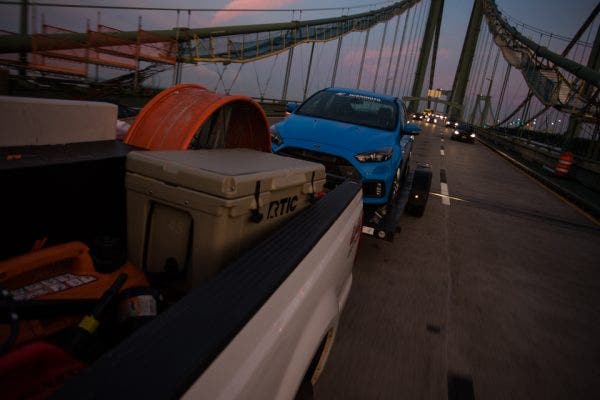
The early morning haul over the Delaware Memorial Bridge into Jersey.
Even though this field trip was shared with the hot-Honda, that didn't mean we were going to give our RS any slack, and it even had first dibs on Englishtown's tarmac. We spent a week preparing for our day in North Jersey, but there was still plenty to do once we arrived. From organizing our make-shift garage to triple checking the lug torque, it was all hands on deck to prep the AWD Focus for its torture testing.

Eric suits up to take the RS on the track
With all systems go, our resident test driver, Eric, suited up for a few shake-down laps to ensure that everything was running as it should, even at racetrack conditions. If you recall from our last post, Raceway Park might not be the biggest or most elaborate track in the area, but it's ideal for putting heat on the differential units. The short and curve-riddled course creates a lack of fresh air to pass over the PTU, in turn dictating the safety perimeters of the RDU. Without the differential cooling system installed, our RS soldiered through 9 laps before activating the thermal protection on the rear differential. In the same harsh track conditions, our original setup was able to grant the RS an additional 3 more revolutions of the track. As Eric set off for the full test, we anxiously awaited to count the number of times the Nitrous Blue blur passed by our tent next to the track with the improved configuration.
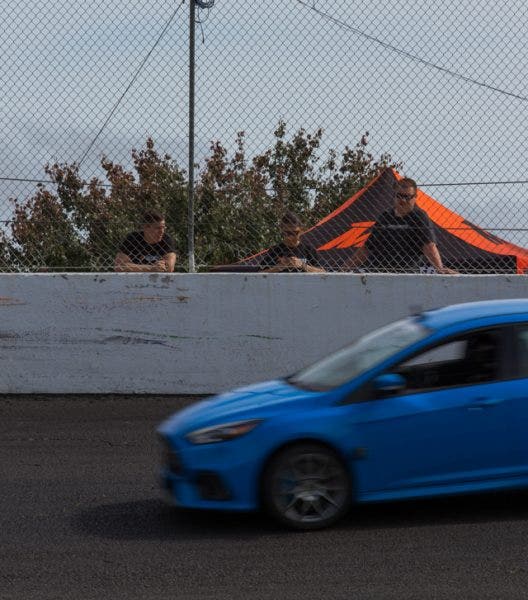
Once out on the track, Eric made sure to wreak havoc on the RS, all while relaying every sensation of the Focus back to Dan in the pit. From the factory, this car was advertised as being able to handle the demanding driving conditions that were turning the AWD car into the most expensive front-wheel drive hatchback, not to mention the factory installed drift mode. With this in mind, Eric varied his laps from gunning for the track record to utilizing the sweeping bends to kick out the rear end and put more stress on the RDU.
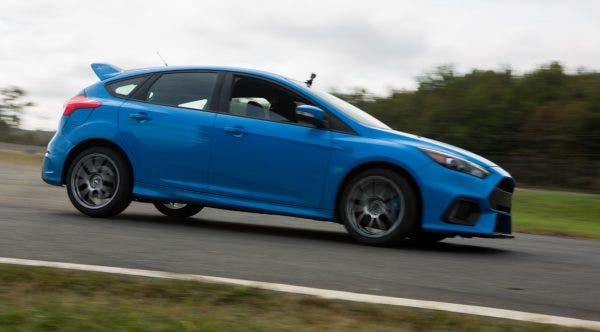
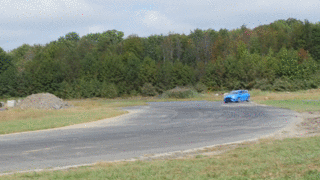
Eric made sure not to cut the RDU any slack during the system's final test run while rounding Raceway Park.
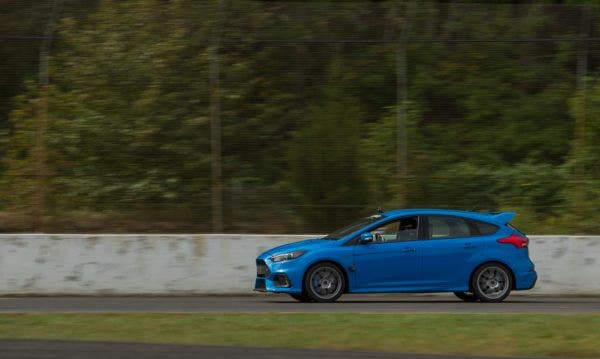
Even through Eric's zealous, yet skillful piloting, we kept the plucky RS out on the tarmac for double the time of our last test. For 23 laps, Eric used every kind of driving style the Focus would see on a track while still sending power to all four wheels. The strange sigh of relief came as Dan heard over the radio that the short track had brought the brake fluid to its boiling point, meaning that other systems of the car were reaching their limits before the AWD system. Even if the brakes lasted, there was still the fuel situation. It goes without saying that driving at full throttle isn't great for fuel economy. As Eric puts it, "with the tune and the amount of boost we're running, the MPGs don't stand a chance. It's more like smiles per gallon." The 13.4 gallon tank was just about dry before the brakes went spongy. The car only had a few more laps left in it.
Even though we have effectively doubled the drive time with AWD on our RS, there's a lingering question: Are the differentials still safe? Short answer, yes. We wanted to extend the active period of the RDU in demanding situations, but not at the cost of cutting short the lifespan of the unit, especially since the ECU is reading temperatures from the coolant rather than the gear oil.
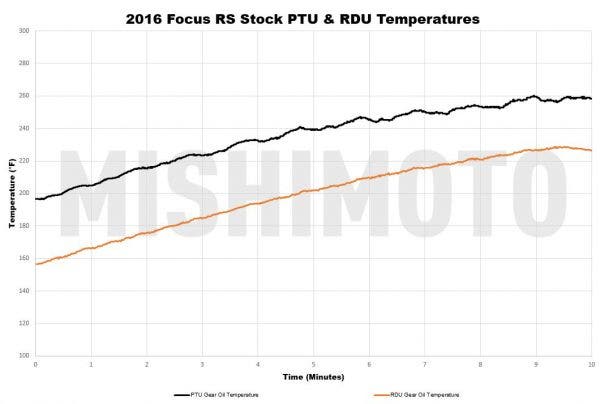
During our stock testing the RDU temperature rose to well over 220°F, which we later found was the activation point for the RDU's thermal protection mode.
During our stock testing the RDU temperature rose to well over 220°F, which we later found was the activation point for the RDU's thermal protection mode.
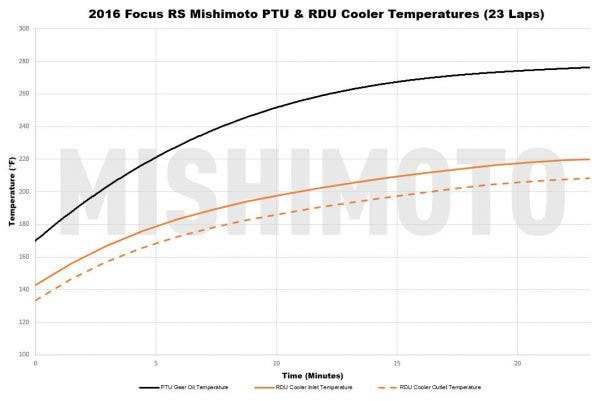
As you can see, even toward the end of our torture test, the outlet temperature plateaued under the typical cut off point for the stock system. Even if the brakes didn't boil over, the RS would have run out of fuel before the rear differential shut off.
With the new configuration, our RS's PTU gear oil temperature would still climb to the standard operating temperature of 260°F, however, as discussed in the previous post, the ECU was actually seeing a maximum temperature closer to 220°F, with our RDU keeping cool around 200°F.
One could ask after the amount of track time, daily driving, and dyno pulls that we put on this car, if Ford made their hot-hatch too hot. The simple answer, sort of. On one hand, it's been known that the cooling system can't keep up with the 2.3L of EcoBoost fury, but we're here for the AWD. In that case, they didn't make it hot enough, and played it safe to keep their rear differential unit intact. Luckily, we also wanted to keep the differential cool, but also at work, to prolong our track days and yours.
I wasn't the only one buzzing around the track and the pit with a camera. Our video team captured every second in HD. For the full track-day experience, check out our video!
Many of you already know this kit has been a year in the making, full of speed bumps and countless engineering hours deciphering the sophisticated system. We reached a bit of an impasse deciding how to move forward. Considering the time that's passed, we want to make sure that continuing with the completion of the PTU/RUD cooler for the focus RS is not only in your best favor, but in ours as well. With such a new and unique system, we decided to try something we've never done before and offer a group buy list for this kit. As it stands this kit works, but still needs some fine tuning, but with enough signups and interest, all systems are go to get this kit ready from production. Click the link below to get you name on the list to keep this project going.
Ford Focus RS Differential Cooler Kit
Thanks for Reading!
-Nick
